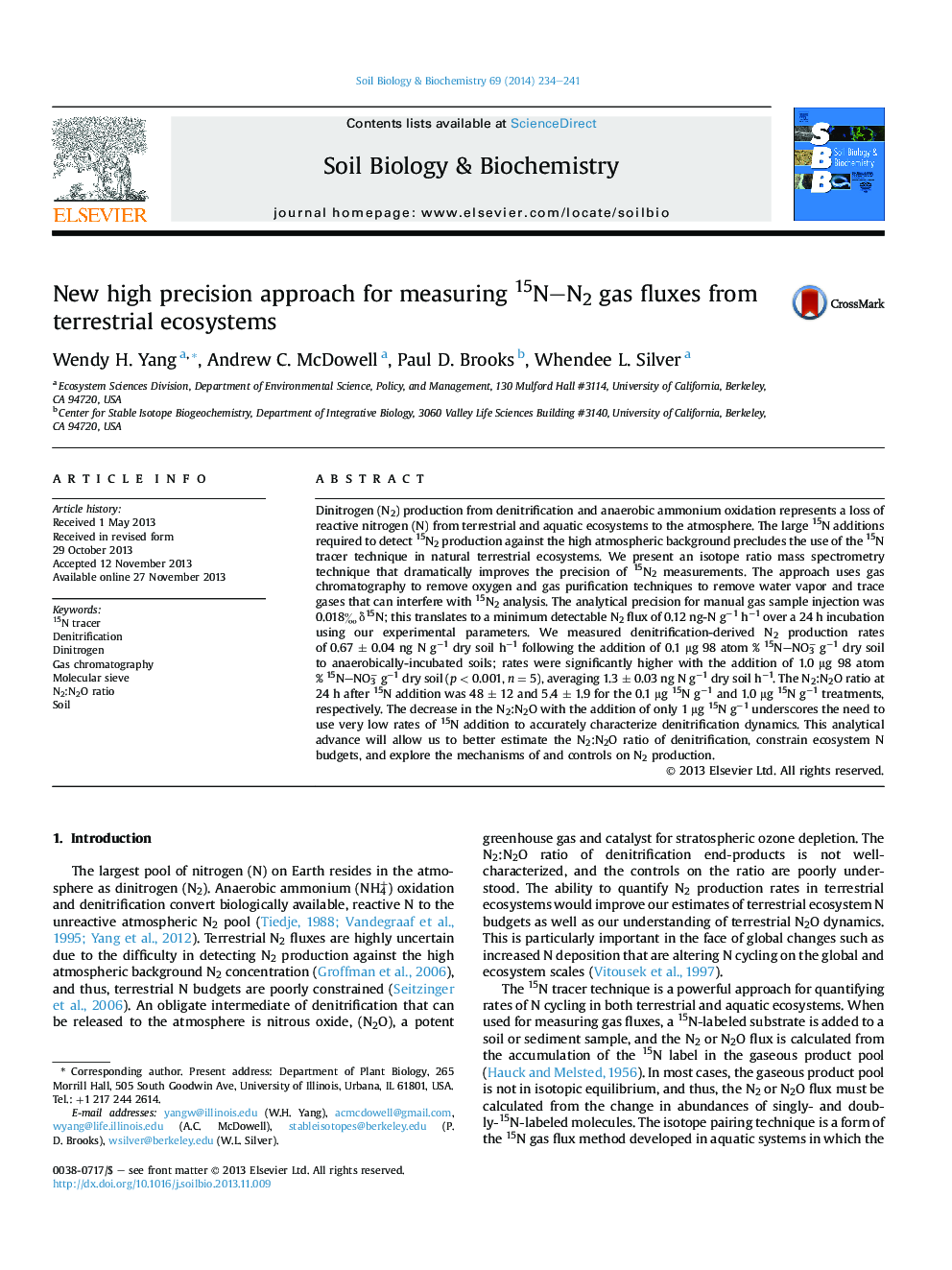| Article ID | Journal | Published Year | Pages | File Type |
|---|---|---|---|---|
| 2024733 | Soil Biology and Biochemistry | 2014 | 8 Pages |
•We improved the precision of 15N–N2 analysis for small gas sample volumes (0.5 mL).•Improvement allows measurement of N2 fluxes from natural terrestrial ecosystems.•We measured 15N2 production as low as 0.21 ± 0.01 ng 15N g−1 h−1 from anaerobic soil.•Denitrification doubled with 1 μg 15N–NO3− g−1 versus 0.1 μg 15N–NO3− g−1 addition.•Relatively small 15N–NO3− additions (1 μg 15N–NO3− g−1) decreased the N2:N2O ratio.
Dinitrogen (N2) production from denitrification and anaerobic ammonium oxidation represents a loss of reactive nitrogen (N) from terrestrial and aquatic ecosystems to the atmosphere. The large 15N additions required to detect 15N2 production against the high atmospheric background precludes the use of the 15N tracer technique in natural terrestrial ecosystems. We present an isotope ratio mass spectrometry technique that dramatically improves the precision of 15N2 measurements. The approach uses gas chromatography to remove oxygen and gas purification techniques to remove water vapor and trace gases that can interfere with 15N2 analysis. The analytical precision for manual gas sample injection was 0.018‰ δ15N; this translates to a minimum detectable N2 flux of 0.12 ng-N g−1 h−1 over a 24 h incubation using our experimental parameters. We measured denitrification-derived N2 production rates of 0.67 ± 0.04 ng N g−1 dry soil h−1 following the addition of 0.1 μg 98 atom % 15N–NO3− g−1 dry soil to anaerobically-incubated soils; rates were significantly higher with the addition of 1.0 μg 98 atom % 15N–NO3− g−1 dry soil (p < 0.001, n = 5), averaging 1.3 ± 0.03 ng N g−1 dry soil h−1. The N2:N2O ratio at 24 h after 15N addition was 48 ± 12 and 5.4 ± 1.9 for the 0.1 μg 15N g−1 and 1.0 μg 15N g−1 treatments, respectively. The decrease in the N2:N2O with the addition of only 1 μg 15N g−1 underscores the need to use very low rates of 15N addition to accurately characterize denitrification dynamics. This analytical advance will allow us to better estimate the N2:N2O ratio of denitrification, constrain ecosystem N budgets, and explore the mechanisms of and controls on N2 production.
